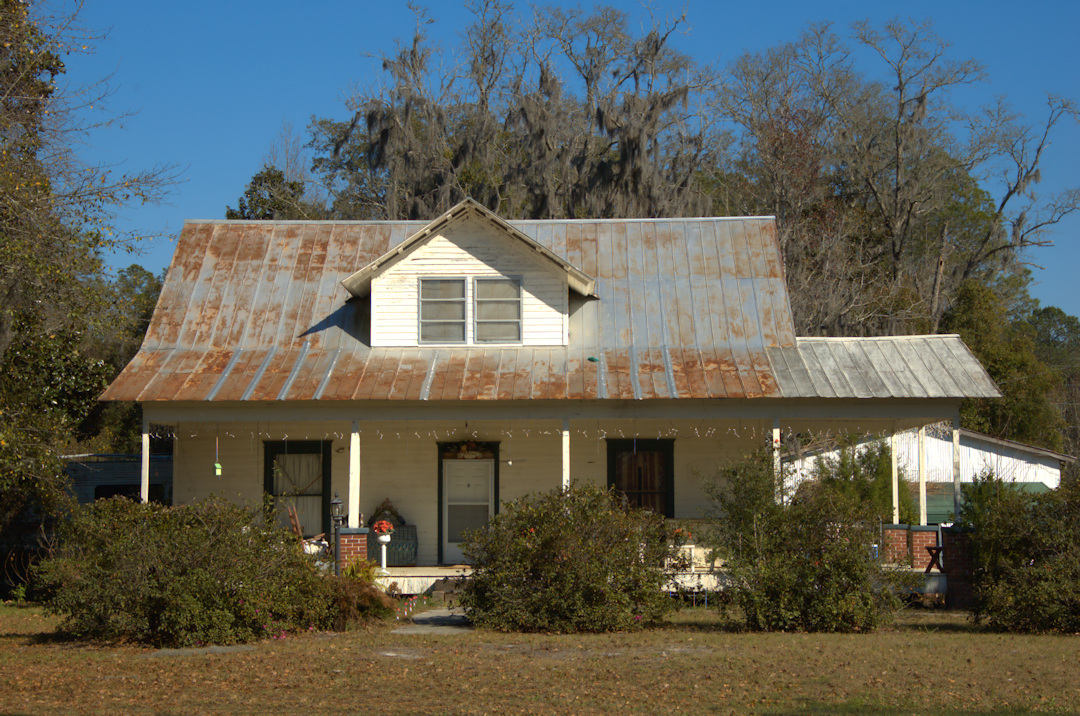
Sardis is the oldest congregation in Charlton County, founded 7 January 1821. It moved to its present location around 1840. Some sources incorrectly note that this church was built in 1821, but that is not the case, as it didn’t even locate here until 1840.

The pulpit is said to be from the original church (circa 1821) and to contain a bullet hole from an overexcited soldier defending the meeting house during the Indian Wars.

The interior is typically unadorned, as are all the Crawfordite churches. I love the worn floorboards seen in the photograph of the entrance below.

The next image shows a detail of one of the holes in the floor. These are found in some of the Crawfordite churches and are used for spitting tobacco.

The support buttresses below the beams are unique (in my travels so far) to Sardis.

As the weather was unsettled while I was photographing Sardis, I didn’t have time to fully explore the cemetery, which is quite large and the final resting place of many Charlton County pioneers. I was drawn, though, to the statuary of the Lowther plot.

To the left of the children’s memorials are the graves of Edwin P. Lowther (19 May 1867-19 August 1913) and Avey E. Robinson Lowther (4 September 1861-21 December 1903). I believe an infant and another wife, named Birdie, are buried here, as well.



















